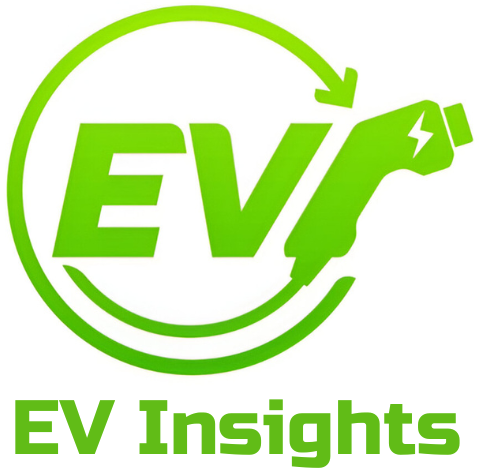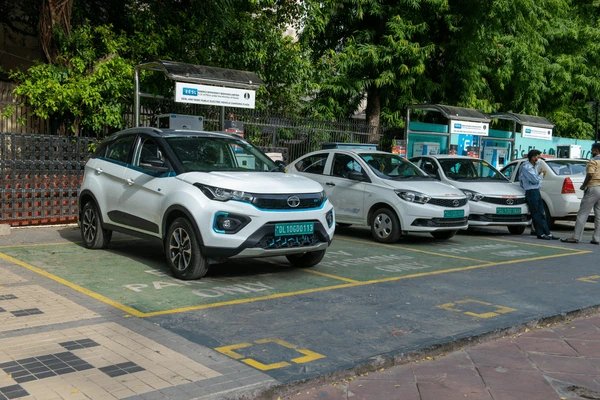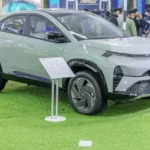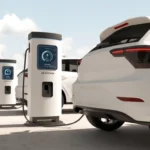India’s electric vehicle (EV) revolution is only as strong as its charging infrastructure. As of 2025, EV charging stations in India have expanded rapidly, but many regions still struggle with poor coverage, lack of interoperability, and inconsistent standards. In this comprehensive guide, we’ll break down how EV charging works, the types of chargers, policy support, costs, current landscape, challenges, and what to expect moving forward. Whether you’re an EV owner, prospective buyer, or industry professional, this guide will help you understand the backbone of India’s EV ecosystem: the charging network.
Understanding EV Charging Basics
Electric vehicles get power from devices known as EV Supply Equipment (EVSE), commonly called “chargers.” These chargers vary by power level, speed, connector type, and location. In India, standards are set under BIS and the Ministry of Power guidelines (e-AMRIT / consolidated guidelines) to ensure safety and interoperability.
Types of Chargers & Standards
- Slow / Level 1 AC Charging: Uses 5 A to 15 A plug (3-pin or Type 2). Adds about 5–15 km of range per hour.
- Moderate / Level 2 AC Charging: Dedicated EV charger with 7 kW to 22 kW capacity. Adds 25–60 km per hour depending on vehicle.
- DC Fast Charging (Level 3 / Rapid / Ultra-fast): Uses high voltage DC (e.g. 50 kW, 120 kW, or more). Allows 10% to 80% charge in 20–40 minutes in ideal conditions.
- Connector standards: Common connectors include Bharat AC-001, Bharat DC-001, CCS-2, and CHAdeMO, aligned with Indian standard IS 17017 and IEC norms.
- Communication & Backend Protocols: Charging stations communicate with central systems using protocols like OCPP (Open Charge Point Protocol) for billing, remote control, updates, and monitoring.
These technical standards ensure that your EV can use various public chargers and that station operators can manage their networks efficiently.
Policy & Government Support for Charging Infrastructure
India’s central and state governments have introduced multiple initiatives and guidelines to accelerate EV infrastructure deployment and support public charging expansion.
Key Policies & Subsidies
- Consolidated Guidelines (2022): The Ministry of Power issued guidelines requiring installation of EV charging stations every 3 km in cities, 25 km on highways, and minimum charger standards.
- PM E-DRIVE Scheme: Launched with a ₹10,900 crore outlay, aims to support public fast charging infrastructure, providing up to 80 % subsidy on upstream infrastructure (power connections, transformers, etc.). Ministry of Heavy Industries
- FAME Phase II & Grants: Under FAME, support has been given to Oil Marketing Companies to install public fast chargers across the country.
- State Policies & Local Mandates: Certain states mandate EV chargers in new residential towers or commercial buildings. Ahmedabad, for example, requires tall buildings to have charging in every slot or one in five slots. The Times of India
These policy measures reduce financial burden on charging infrastructure providers and support faster rollout of public chargers across geographies.
Cost Structure & Setting Up a Charging Station
One of the biggest questions for investors and businesses is: how much does it cost to set up an EV charging station? Let’s break down the components.
Cost Components & Estimate
- Site & Civil Works: Land lease, pavement, shelter, fencing, and safety structures.
- Electrical Infrastructure: Transformers, cabling, switchgear, meters, and grid connection.
- EVSE Hardware: AC chargers, DC fast chargers based on power rating.
- Backend Systems & Software: Management software, billing systems, networks.
- Licensing, permissions & compliance
According to ClearTax’s recent guide, public station setups in India range from ₹1 lakh to ₹50 lakh, depending on the scale, power level, and location. ClearTax Charger costs alone:
- Bharat AC-001: ~₹65,000
- Bharat DC-001: ~₹2,47,000
- Type 2 AC: ~₹1,20,000
- CHAdeMO / CCS (fast DC): ₹13 to 14 lakh or higher in certain models.
These are indicative costs; real costs can vary by region, import fees, or vendor markup.
Current Landscape & Coverage in India
India’s charging infrastructure has grown fast, but it’s still unevenly distributed.
Statistics & Key Players
- India had over 29,000 public charging points by mid-2025, mostly concentrated in metros and urban centers.
- Major operators: Tata Power, Statiq, ChargeZone, Exicom, Ather Grid (for scooters), and others.
- Charge Zone reportedly operates over 13,500 charging stations nationwide. LinkedIn
- Some EV OEMs (like Ather) have proprietary networks (Ather Grid) offering fast chargers in selected cities. Wikipedia
- Tata Motors has announced plans to more than double its charging points to 400,000 over next two years, including a “Mega Charger” network with 120 kW fast chargers.
While cities like Delhi, Mumbai, Bengaluru, and Pune have multiple charging points, larger swathes of rural and tier-2/3 cities still lack adequate infrastructure.
Challenges & Limitations
Even though progress is visible, India’s EV charging ecosystem faces multiple roadblocks.
- Grid constraints: Sudden demand spikes can strain the electricity network, especially in areas with limited capacity.
- Interoperability & standards: Many charging stations still lack consistent standards or compatibility with all EV brands.
- High upfront cost & ROI concerns: Long payback periods discourage smaller operators.
- Maintenance & downtime: Public chargers require regular servicing and face wear, vandalism, or network issues.
- Regulation & permitting delays: Difficulties obtaining timely permissions from DISCOMs, local bodies, and multiple agencies.
- Distribution imbalance: Urban bias leads to charger deserts in rural or highway corridors.
Overcoming these challenges will be crucial for India to support mass EV adoption.
Comparison / Buyer’s Guide Section
Here’s a comparative snapshot of charger types & ideal use cases:
| Charger Type | Power Rating | Ideal Use | Charging Speed | Cost Range |
|---|---|---|---|---|
| AC Slow / Level 1 | ~3–7 kW | Home / workplace overnight charging | 5–15 km/h | ₹30,000 to ₹1,50,000 |
| AC Moderate / Level 2 | 7–22 kW | Residential complexes / public parking | 25–60 km/h | ₹1,00,000 to ₹5,00,000 |
| DC Fast / Rapid | 50 kW | Highway stops / service stations | 10%→80% in 20–40 min | ₹5,00,000 to ₹20,00,000+ |
| Ultra Fast / Megacharger | 100-240 kW+ | Highways, major hubs | 10%→80% in 10–20 min | ₹20,00,000+ |
This table helps prospective infrastructure developers or EV users understand which charger suits which context best.
Pros & Cons
Pros
- Encourages EV adoption by reducing “range anxiety”
- Enables intercity travel and long distance driving
- Opens business opportunities in charging infrastructure
- Promotes renewable energy integration, especially with solar + charging
Cons
- High installation and maintenance costs
- Dependency on grid and local power infrastructure
- Operational risks: downtime, vandalism, connectivity issues
- Uneven coverage concentrates benefits in metros only
Conclusion
Public EV charging stations are the backbone of India’s electric future. Despite challenges like grid capacity, funding, and uneven distribution, recent policy support and growth trends point toward a more connected, reliable charging network. For EV users, it’s essential to plan routes, use apps to find nearby chargers, and stay updated on new infrastructure. For developers, focusing on underserved corridors and collaborating with DISCOMs and government schemes can unlock strong opportunities.
The future of EV adoption depends not just on cars, but on the power they get. Explore more EV insights, stay charged, and drive confidently into the electric future.




M88e Mansion thì khỏi phải nói, nhà cái uy tín lâu năm rồi. Chơi cá cược online mà không biết M88e Mansion thì coi như chưa biết đến thế giới game online luôn đó. Web mượt, giao diện đẹp, nạp rút nhanh gọn lẹ. Chấm điểm 10 cho chất lượng! m88e mansion là chân ái!